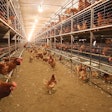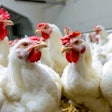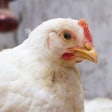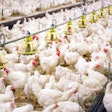
New technology that analyzes how behavior and environment can impact a bird’s gene activity could help producers better understand poultry welfare and enhance the transparency and traceability of the entire supply chain.
“Epigenetics is a branch of biology that determines how the environment an animal has been exposed to influences patterns on its genetic material,” explained Florian Boehl, Ph.D., head of epigenetics activities at Creavis, Evonik's strategic research entity and business incubator.
“Now, for the first time, it is possible to determine the biological age of chicken and derive their health status from this information.”
For example, epigenetics could verify claims that chicken products are free-range.
“This test is an excellent tool for internal quality control and optimization, as well for intra- and for inter-company certification, all the way to end-consumers,” Walter Pfefferle, a biologist who works as a manager at Creavis, said.
How epigenetics works
Methyl groups that activate or repress individual genes, or methylation sites, help researchers identify epigenetic changes in the chicken genome.
“We have developed a simple way of proving animal welfare/animal health status, the method of slaughter, use of antibiotics and geographical origin, based on a piece of meat,” noted Pfefferle.
“Samples of chicken can be taken from anywhere, e.g., from processing plants or supermarket shelves. Ultimately, this increases consumer confidence.”
Artificial intelligence (AI) and algorithms analyze patterns of methylation taken from meat samples or live birds to reveal information about chicken health, welfare and performance – data that includes farming methods, antibiotic and medication use, origin and method of slaughter.
To learn more about epigenetics and its benefits to the poultry industry, an epigenetics and bioinformatics pilot program is currently underway in Singapore to validate the method and explore new areas of application.
“In the coming months, we aim to find out which factors are important for potential companies in the retail, meat processing, and agricultural sectors,” Boehl concluded.
















